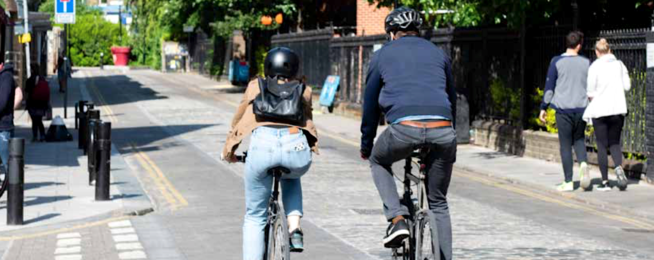Slower traffic speeds are critically important to making our streets safer and more attractive to bike riders and pedestrians.
So speed limits, and their enforcement, has been central to efforts to reduce death and serious injuries, and make streets comfortable for people on bikes and on foot.
But there is more than one way to skin a cat.
And with safe speed, the more approaches you utilise the more effect you have.
Some of these approaches might surprise you. For instance, did you know that the look and feel of a street can influence the way drivers behave, or misbehave when driving through it?
Transport for London has just published a new toolkit packed with interesting ideas we can deploy to achieve lower traffic speeds in streets.
"How a street looks and feels has a measurable effect on traffic speeds and is one of the most effective means of promoting compliance with the speed limit," the toolkit says.
"If motorists perceive that they have priority and that the street has been designed primarily for vehicular traffic, then they will drive accordingly.
"It is therefore important that the role of streets as places to dwell and relax, and where there are things to see and do, should be considered when seeking to design streets with lower speeds.
"The look and feel of a street and the number of people who spend time on it can be heavily influenced by factors such as land use, quality of building facades, presence of active frontages and the way buildings and trees frame the street.”
The document contains 22 useful approaches to changing streets for lower speed, safety and attractiveness.
One interesting concept is the ‘elastic street’—low cost temporary measures that change the way people use the street—parklets, markets stalls, even hay bales outside schools.
Low traffic streets the have been filtered by mode is another idea that should have a big future in Australia.
These are groups of residential streets, bordered by main or ‘distributor’ roads, where through motor vehicle traffic is discouraged or removed.
"While residents in a low-traffic neighbourhood can still do all their journeys by car if they want or need to, it is harder or impossible to drive straight through from one main road to the next, the toolkit says.
"With through traffic gone, the streets in a low-traffic neighbourhood see dramatic reductions in motor traffic levels and often speeds too.
"Quieter, safer-feeling streets enable residents to switch to more healthy ways of getting around, particularly for short journeys.
"There are many ways to obtain a low-traffic neighbourhood, but the best is arguably using ‘modal filters’ that stop motor traffic driving beyond a certain point, placed at strategic points around the neighbourhood.
"Modal filters can be bollards or gate road closures that do not let any motor traffic through; or ‘bus gates’ to let some public transport through; or even width restrictions solely to keep out the biggest vehicles.
"Where filters go in, there is often some extra space around them for public realm improvements too – ‘pocket parklets’, tree planting, planters, seats etc.”
For the full list of practical measures get the toolkit here.


